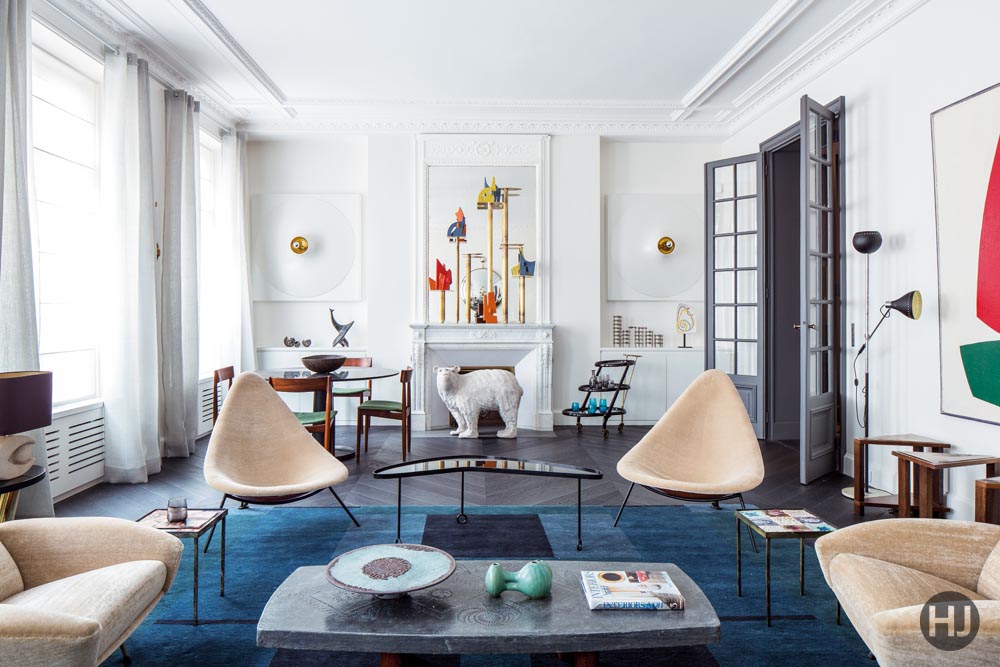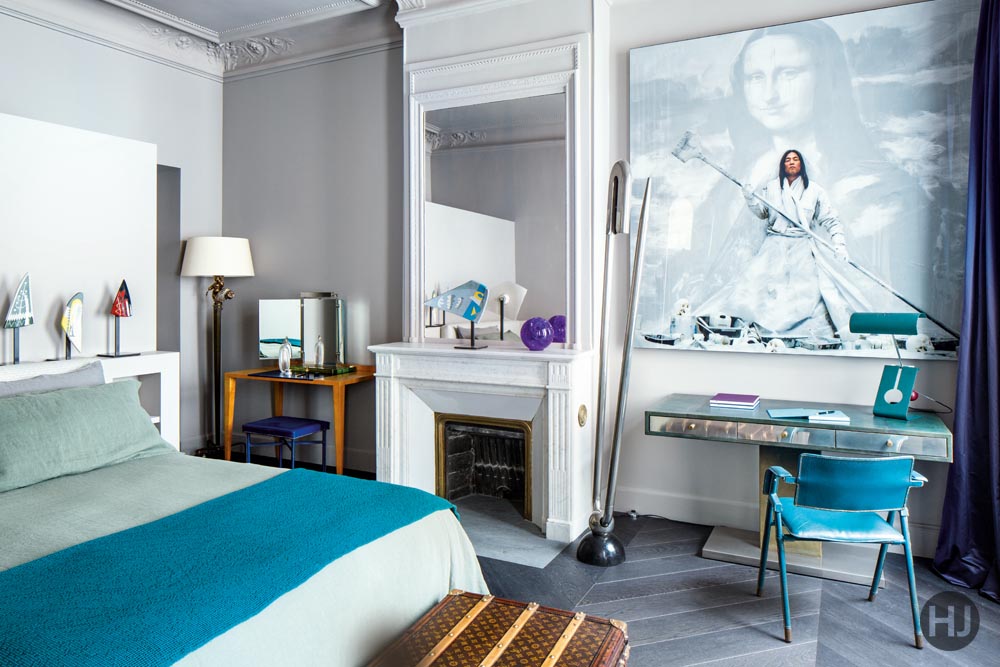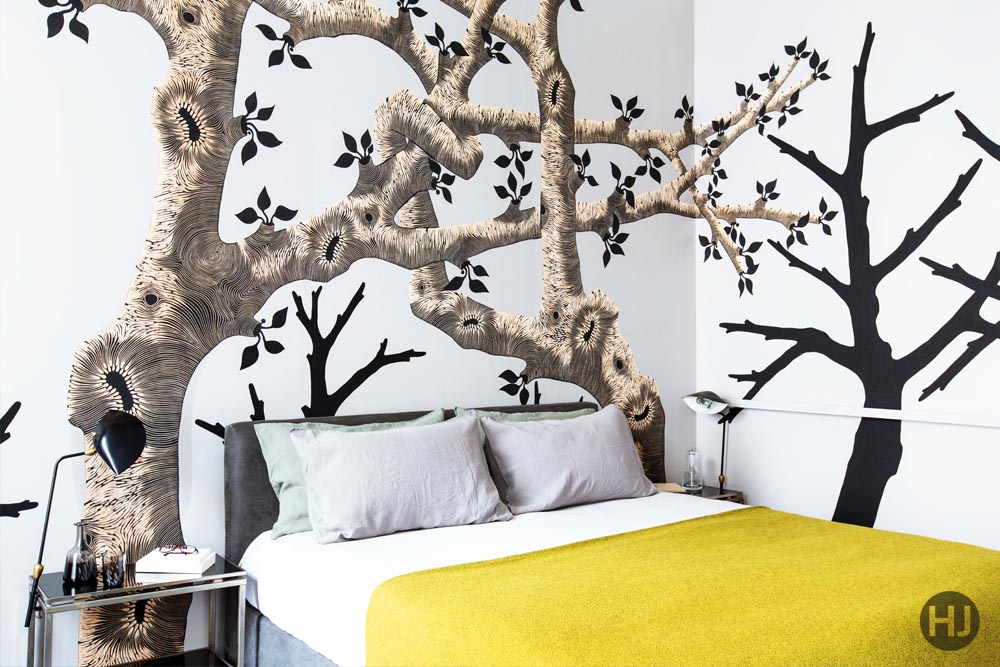Jacques Hervouet’s approach to interior design is based on what he playfully calls the D-spot”. The D stands for decoration,” he explains. You choose an object, a painting or a piece of furniture you really love, and that becomes the focal point of the room, around which the rest is structured.” The ensuing process leaves things to happenstance. I never have a precise idea of what the final result will be,” he admits. For me, it’s like a puzzle you put together piece by piece. It can be a little scary for some clients, but in the end things always turn out all right.”

The D-spots in this 2,500-square-foot, two-bedroom apartment on Paris’s Left Bank are quite diverse indeed. Hervouet’s starting point for the study was a small ash and laminate desk by Jean Royère; in the guest room, it was a striking photo by Gérard Rancinan of artist Yan Pei-ming in front of the Mona Lisa; and in the sitting room, a mirror of Hervouet’s own design, whose circular forms were inspired by baroque pearl earrings. The last led him to favour furniture with rounded shapes, such as Johannes Andersen’s Capri sofa and two chairs designed in the mid-1950s by the Atelier de Recherche Plastique collective formed by Pierre Guariche, Michel Mortier and Joseph-André Motte.

Among his own stylistic influences, Hervouet cites Fauvism (especially the paintings of Maurice de Vlaminck) and the renowned English interior designer David Hicks. What I like about Hicks’ work is that it was whimsical, but not at all weird,” Hervouet says. It was always very controlled and skilfully orchestrated.” He’s particularly attracted to the use of colour and asserts, If there were none in an interior, I’d be miserable.” In this space, Hervouet introduced cobalt blue and teal tones to the guest bedroom, and installed a bright painting by René Roche in the sitting room.

The post Ode to Decoration appeared first on Home Journal.






